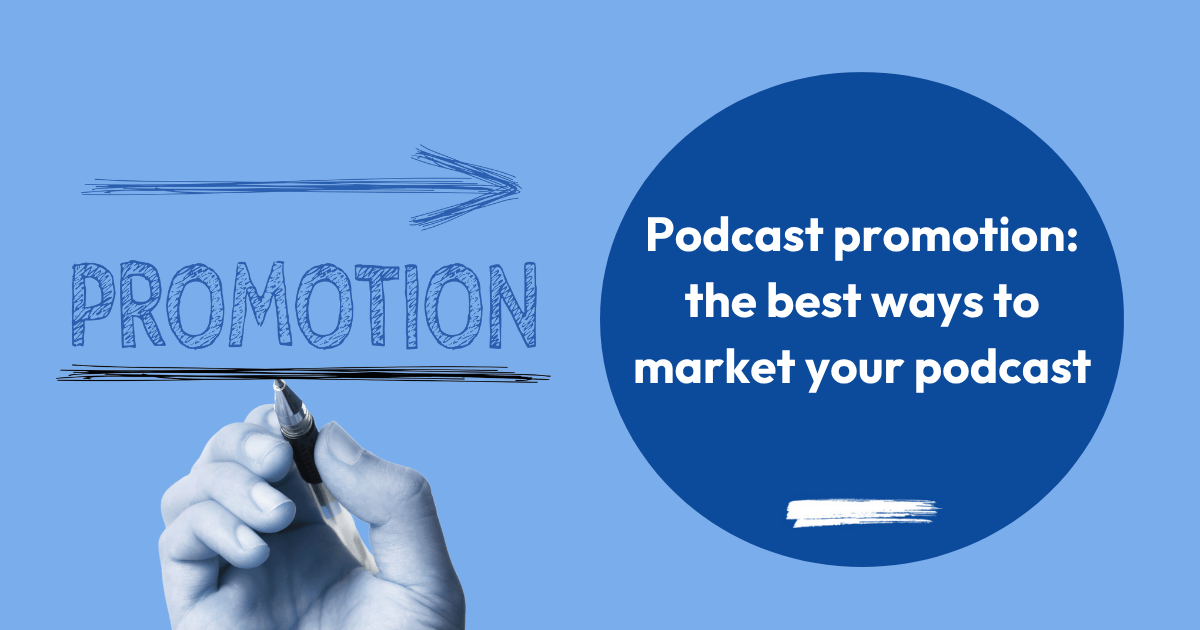
Before promoting a podcast, it’s important to validate the show with real listeners. Early feedback helps you refine your format, pacing, audio quality, and episode structure. A few well-tested episodes give you a stronger foundation to promote, because the show’s value is clear and the listening experience is consistent. If your show doesn't resonate with the intended audience, no manner of promotion will work.
Marketing a podcast is an ongoing process, not a one-time launch task. Most shows gain traction by combining consistent production with clear, repeatable promotion systems. In this article, we outline the core channels that reliably drive listener growth and the practices we recommend for podcasters at any stage.
Build a strong foundation before promoting
Clarify your positioning
Your podcast’s positioning should answer three questions:
- What topic does the show cover?
- Who is the intended audience?
- What outcome or value can a listener expect per episode?
A concise, consistent message makes every promotion effort more effective.
Create a listener-friendly website
A website remains the most reliable home for your show. It should load quickly, include automated episode pages, support email capture, make it easy to follow the show, and present a clear description of the podcast. This makes it easier for listeners to explore the show and share episodes. Sites like Podpage make this easy.
Use owned channels to build long-term reach
Email newsletters
Email remains one of the highest-performing promotion tools. Send new episodes with a short summary, key takeaways, and a direct link to listen. Each email builds habit and keeps your show top of mind. Kit and Mailerlite have the ability to turn an RSS feed into a newsletter
Your website
Beyond hosting your show, a website improves discoverability through search. Search-optimized episode pages, transcripts, and structured metadata increase the chances of your show being found by new listeners looking for specific topics. Podpage has built in SEO Tools (see video).
Social posts
Consistent posting helps you reach people who prefer short-form content first. Focus on concise episode summaries, short clips, and quotes from guests. Keep messaging consistent with the show’s positioning. This keeps your brand in front of your audience in anticipation of the next episode. Podpage can automate this feature.
Repurpose content to reach new audiences
Short video clips
Short clips work well across platforms. Aim for 15–45 seconds and highlight clear takeaways or strong statements. These clips often outperform static images and introduce the show to new audiences. Tools like Capcut and Descript can make this easy.
Articles and written summaries
Episode summaries or longer articles based on conversations can rank in search and attract readers who later convert to listeners. Castmagic turns your transcripts into hundreds of pieces of content.
Pull-quotes and graphics
Simple visuals with a strong quote give social platforms additional entry points and maintain consistency across posts.
Leverage external platforms for discovery
Podcast directories
Submit your podcast to all major directories. While this step is basic, ensuring accuracy and up-to-date metadata matters. Good descriptions and categories improve platform-level discovery. There are more directories than Apple and Spotify. See this list
Cross-promotion with other podcasters
Cross-promotion remains one of the most reliable growth levers. It is most effective when both shows target similar audiences. Promote each other’s episodes, run feed swaps, or create short introductions inside each other’s feeds. This strategy gets you in front of what you're looking for: people who like podcasts.
Guest appearances
Appearing on other podcasts exposes you to engaged listeners who already enjoy audio content. When possible, choose shows with overlapping audiences and clear alignment with your topic. Do you research so you ensure you provide value to the audience.
Build habit through consistency
For most shows, sustained growth comes from publishing consistently. A predictable schedule helps listeners build a recurring habit and improves platform-level recommendations.
Consistency also makes your promotion workflow easier because you can plan content repurposing, email updates, and social posts around a fixed cadence.
In the end you become part of the audience's routine which is huge.
Measure and refine what works
Promotion is an iterative process. Track basic indicators such as listens, website traffic, email signups, and engagement on social posts. Patterns reveal which channels drive results and which require adjustments.
Over time, a repeatable promotion system develops—one that aligns with your audience, your production workflow, and the resources available.
To measure what works, you can use a tool like a link shortener such as Switchy.
Conclusion
Podcast promotion is not about a single tactic. It starts with your show being remarkable.It’s about creating a clear, valuable message, publishing consistently, and building a reliable system for reaching listeners through multiple channels. By focusing on fundamentals and refining what works, podcasters can build sustainable, long-term audience growth.


